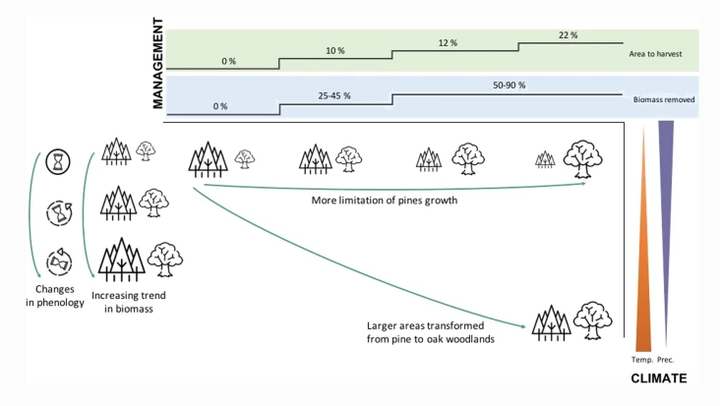Forest management scenarios drive future dynamics of Mediterranean planted pine forests under climate change

Abstract
Planted pine forests are highly abundant communities in the Mediterranean Basin. Being the result of past reforestation, these forests show high species and structural homogeneity. Diversification to conifer-broadleaved mixed forests is recommended to promote adaptation to climate change and increase their resilience to perturbations. This study aims at evaluating how these planted pine forests will develop in the future as a result of the combined impacts of management and climate. We applied a forest landscape model (LANDIS-II) to simulate different climate scenarios and management strategies designed in cooperation with forest managers to assess their effects on the performance of planted pine forests and their change in terms of forest composition. Climate change scenarios caused a shift in the phenological growth pattern of planted pine forests by reducing forest growth during summer and increasing photosynthetic productivity in spring and fall, particularly under high emission scenarios. Biomass increased through time and more strongly under climate change, but this increase differs among species, resulting in changes of forest types across the landscape. Our results portray natural succession as the main driver of forest change, but intensive management accelerated this process by limiting pine growth and promoting growth of oak species. Our results highlight the importance of active management on planted pine forests to favour mixed and climate-adapted ecosystems in shorter time scales than offered by succession alone. Moreover, our spatially explicit modelling approach helps to identify areas where lack of seed dispersal and/or competitive exclusion prevent natural diversification, providing useful recommendations for interventions. However, the modelling approach has some limitations since it does not consider natural disturbances.